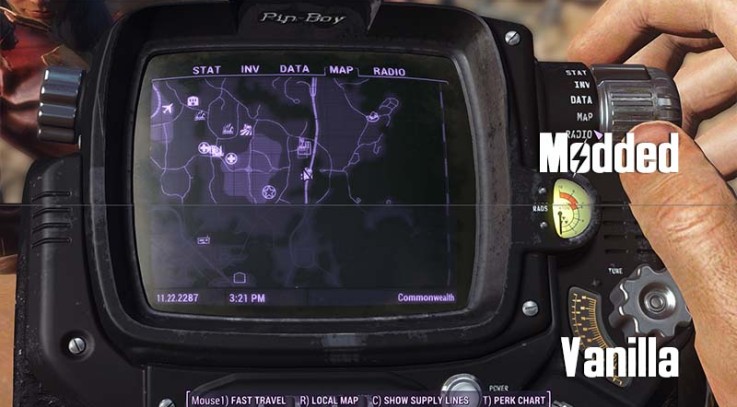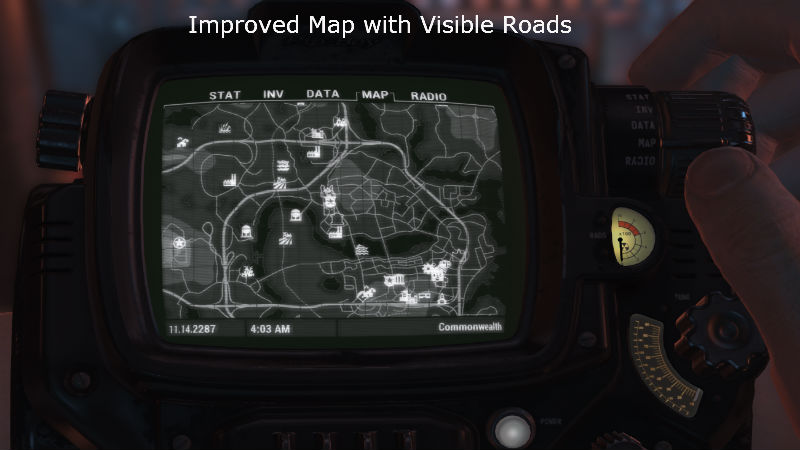Improved Map With Visible Roads
Pre-1700, the British road network hadn’t experienced many major additions since the Romans had built some over a millennia and a half earlier. The main roads were largely the decayed remains of the Roman system, with little attempt at improvements until after 1750. Had passed a law making parishes responsible for roads, and each was expected to use labour, which workers were obliged to offer, for free six days a year; landowners were expected to offer the materials and equipment. Unfortunately, the workers were not specialised and often didn’t know what to do when they got there, and with no pay there wasn’t much incentive to really try. The result was a poor network with much regional variation. Despite the appalling conditions of the roads, they were still in use and vital in areas not near a major river or port.
- Improved Map With Visible Roads Not Working
- 3d Mapquest Driving Directions
- Fallout 4 Improved Map With Visible Roads
SUPPORT FOR FAR HARBOR ADDED UNDER OPTIONAL FILES Included in:Five Mods That Improve Fallout 4 Without Changing Everything by KotakuJeyBee for the scaling tip, and permission to include this fix here.Thanks to Carda for the original region map.
Improved Map With Visible Roads Not Working
Freight went via the packhorse, a slow, cumbersome activity which was expensive and low in capacity. Livestock could be moved by herding them while alive, but this was a tiring process. People used the roads to travel, but movement was very slow and only the desperate or the rich travelled much. The road system encouraged parochialism in Britain, with few people – and thus few ideas – and few products widely. The one bright spot among the British road system were the Turnpike Trusts.
These organisations took care of gated sections of road, and charged a toll on everybody travelling along them, to be ploughed into upkeep. The first turnpike was created in 1663 on the A1, although it was not run by a trust, and the idea didn’t catch on until the start of the eighteenth century.
The first actual trust was created by Parliament in 1703, and a small number were created each year until 1750. Between 1750 and 1772, with the needs of industrialization pressing, this number was much higher. Most turnpikes improved the speed and quality of travel, but they increased the cost as you now had to pay. While the government spent time arguing over wheel sizes (see below), the turnpikes targeted the root cause of the problem in the shape of road conditions. Their work on improving conditions also produced road specialists who worked on larger solutions which could then be copied. There were criticisms of turnpikes, from a few bad trusts who simply kept all the money, to the fact that only around a fifth of the British road network was covered, and then only the major roads. Local traffic, the main type, benefited much less.
3d Mapquest Driving Directions

Fallout 4 Improved Map With Visible Roads

In some areas parish roads were actually in better conditions and cheaper. Even so, the expansion of Turnpikes caused a major expansion in wheeled transport. While industry did rely on roads at the start of its, they played a far smaller role in moving freight than the newly emerging transport systems, and it is arguably roads’ weaknesses which stimulated the building of. However, where historians once identified a decline in roads as new transport emerged, this is largely rejected now, with the understanding that roads were vital for local networks and the movement of goods and people once they had come off the canals or railways, whereas the latter were more important nationally.